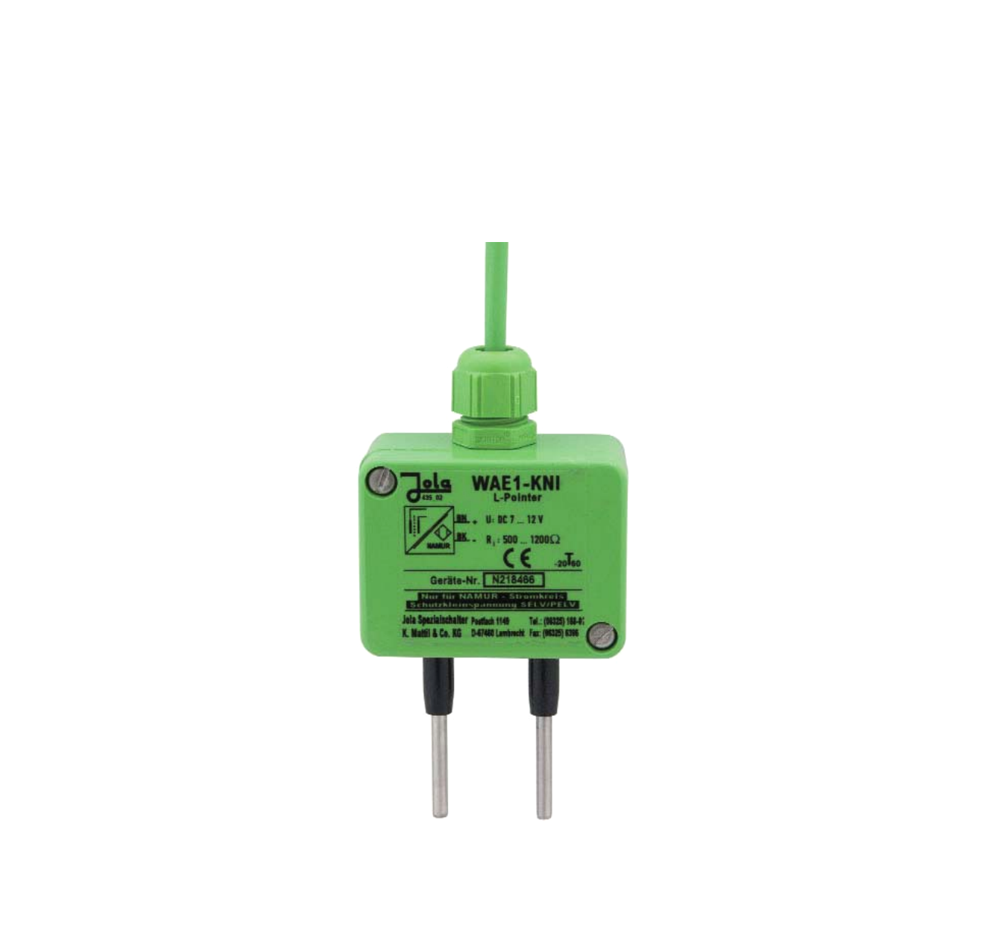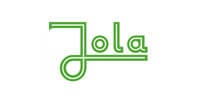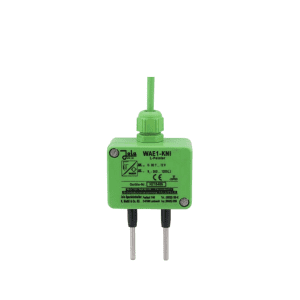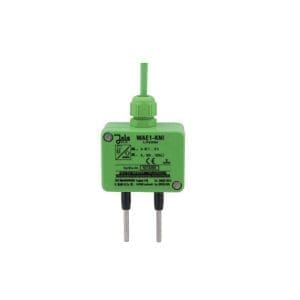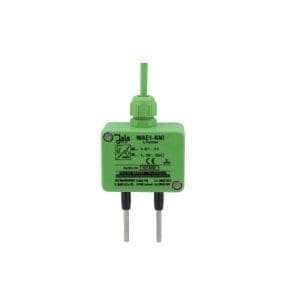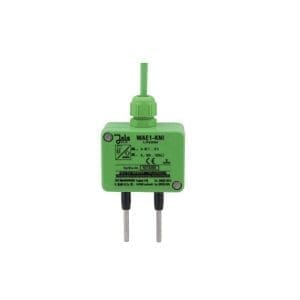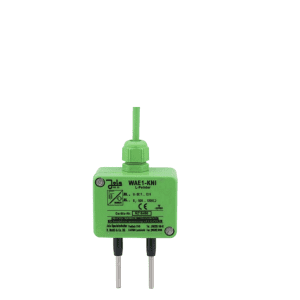WAE1-KNI/A JOLA wall electrode
Po naročilu. Pošljite povpraševanje.
Delivery time: okvirno 2 tedna
- Design: leak detector with evaluation electronics as initiator for NAMUR circuit
- Housing: PC or PP
- electrical connection: two-wire connection via 2 x 0.75 connecting cable, 2 m long
- temperature range: – 20 °C to + 60 °C
- response sensitivity: approx. 30 kΩ or approx. 33 μS (conductivity)
Description
The WAE1-KNI/A JOLA floor electrode signals via an electrode relay the presence of liquid medium due to, for example, a burst pipe. Floor electrodes are designed for use in dry rooms.
WAE1-KNI/A with integrated galvanic separation:
- prevents interconnection of electrode circuits
- prevents the formation of earth loops when more than one detector is connected to a common power supply circuit.
Conductive wall electrodes WAE1 -… should only be used in normally dry environments. They should be mounted on the wall so that the tips of the electrode rods are just above the floor, which should be controlled.
The WAE1 -… conductive wall electrode is equipped with two separate electrodes in the form of two electrode rods: 1 control electrode and 1 ground electrode. As soon as the conductive liquid creates a conductive path between the two electrode rods, the switching state of the leak detector changes.
Conductive measurement principle
The principle of conductive measurement is used to detect electrically conductive liquids. Not suitable for the detection of electrically non-conductive liquids.
Electrically conductive liquids are usually aqueous solutions of salts, acids or alkalis. In water, the molecules of these substances separate into positive and negative ions, which give the aqueous solution its electrical conductivity. The conductive leak detector detects the presence of an electrically conductive liquid and then sounds an alarm.
The measurement process uses alternating current to ensure accurate response sensitivity and to prevent galvanic processes at the electrodes. The conductive leak detector shall have an integrated electronic evaluation unit with galvanically isolated circuits. This prevents the electrode circuits from interconnecting and forming earth loops if more than one of these leakage detectors is connected.
Reliable detection of liquids with poor electrical conductivity, such as condensate or demineralised water, is ensured by the factory-set sensitivity response of the conductive leak detector.
Features WAE1-KNI/A
- Design: leak detector with evaluation electronics as initiator for NAMUR circuit
- electrode rods: 2 316 Ti stainless steel rods, each 24 mm in diameter
- Housing: PC or PP
- electrical connection: two-wire connection via 2 x 0.75 connection cable, 2 m long, longer connection cable on request; halogen connection cable available on request
- supply voltage: only for connection to extra low voltage SELV or PELV! (see datasheet)
- output signal: impressed current signal in the power supply circuit
- operation: quiescent current principle
- switching state in case of cable break: I < 0.2 mA
- switching condition both sensing capacitors are activated: I ≤ 3 mA
- switching condition both sensing capacitors are not activated: I ≥ 1 mA
- switching status in case of short circuit or wrong polarity: I > 6 mA
- galvanic isolation: only for connection to extremely low voltage SELV or PELV! voltage resistance> 500 V between capacitor circuit, supply circuit and output circuit
- max. no-load voltage across the sensing capacitors: 5 Veff 15 kHz (safety extra-low voltage SELV)
- max. short-circuit current on sensing capacitors: 0.2 mA
- response sensitivity: approx. 30 kΩ or approx. 33 μS (conductivity)
- temperature range: – 20 °C to + 60 °C
For more technical information, please refer to the datasheet attached under the Documentation tab.
Example of use WAE1-KNI/A: monitoring false floors in the server room using a cable electrode and a panel electrode in the adjacent room.
Welcome to the article ”Conductive Measurement of Liquids”
Povpraševanje
You may also like…
For your victories, with our solutions. Call us:
Contact us.
Call us:
+386 (0)2 62 96 720
Email us:
[email protected]

